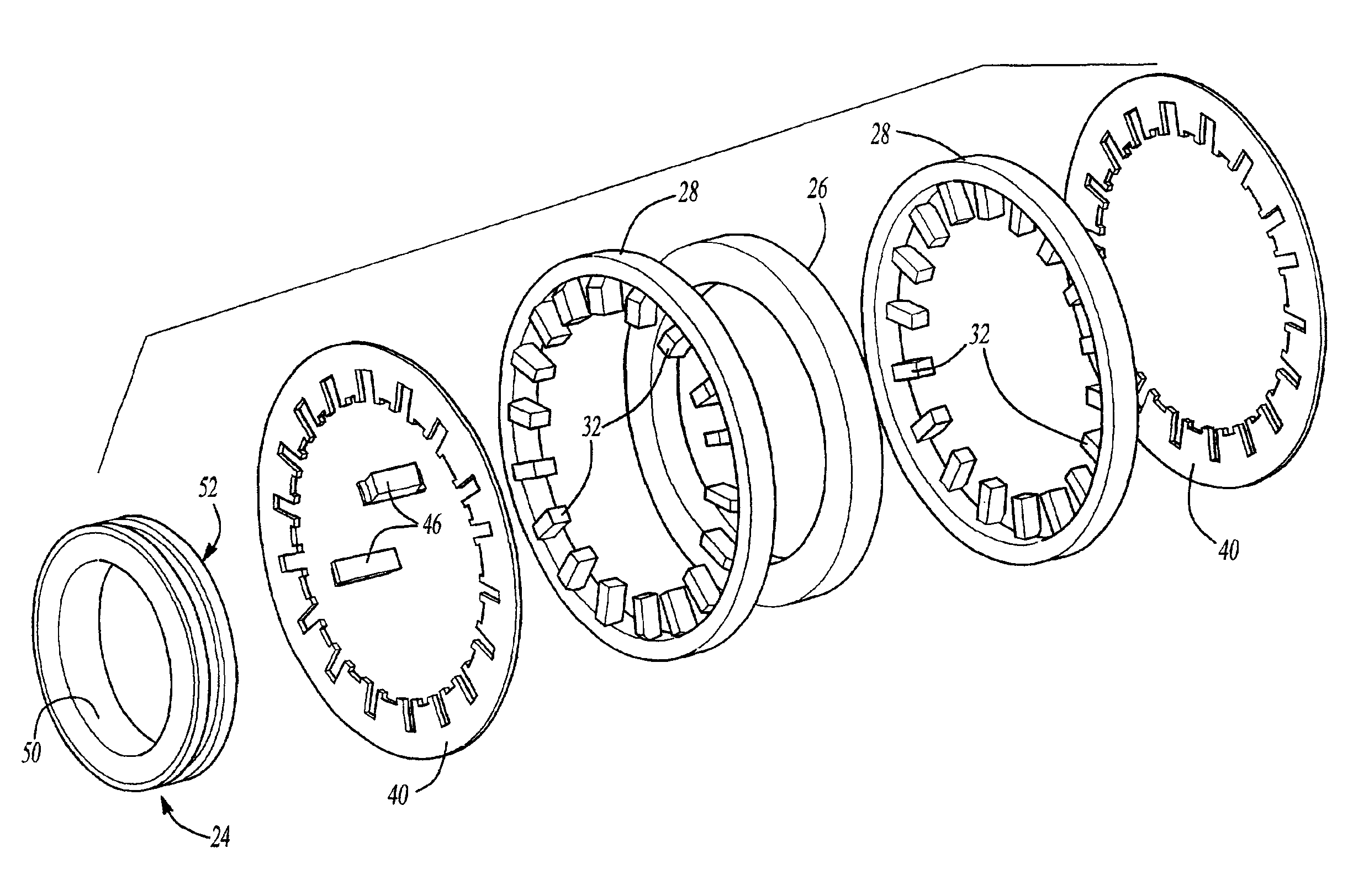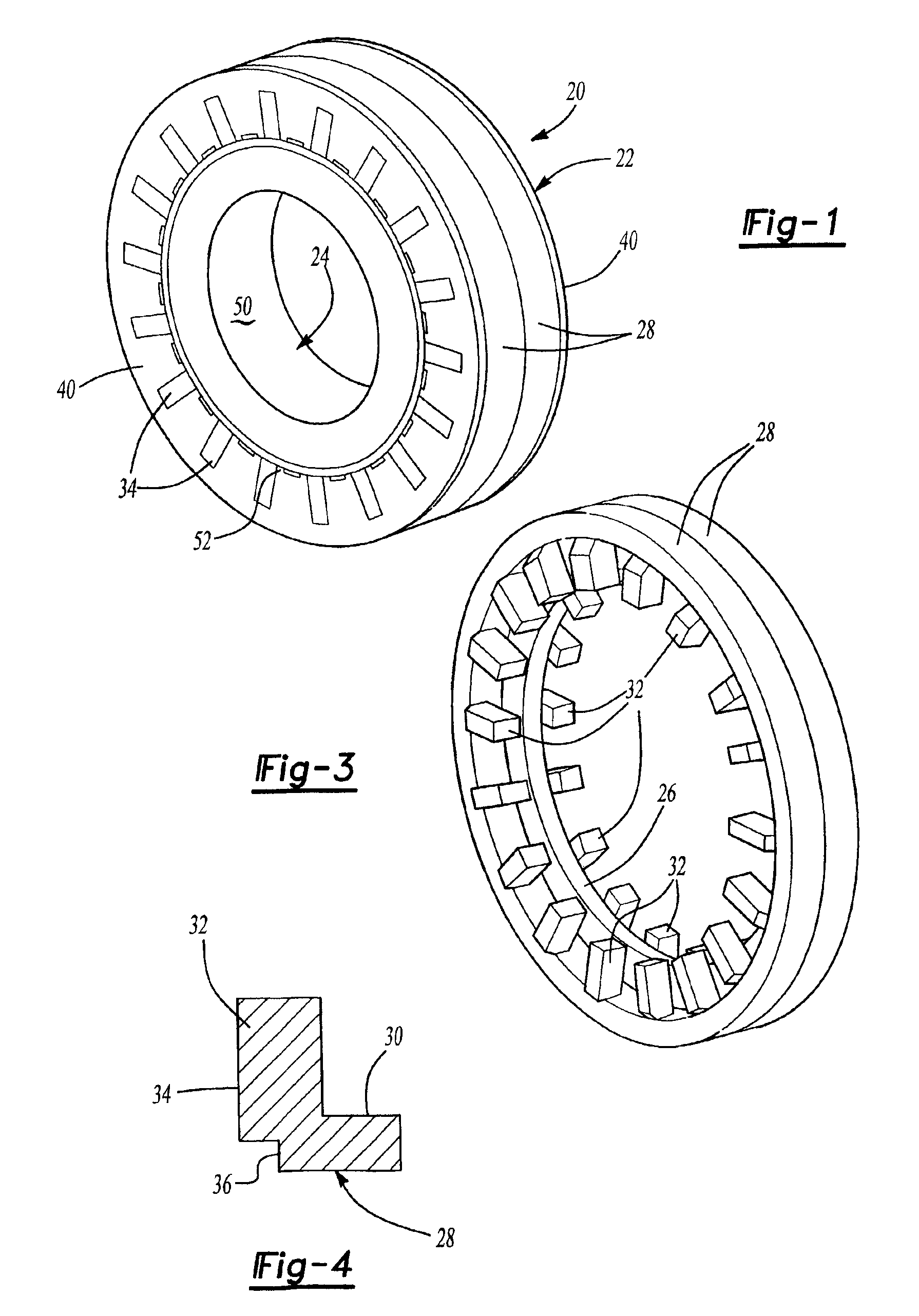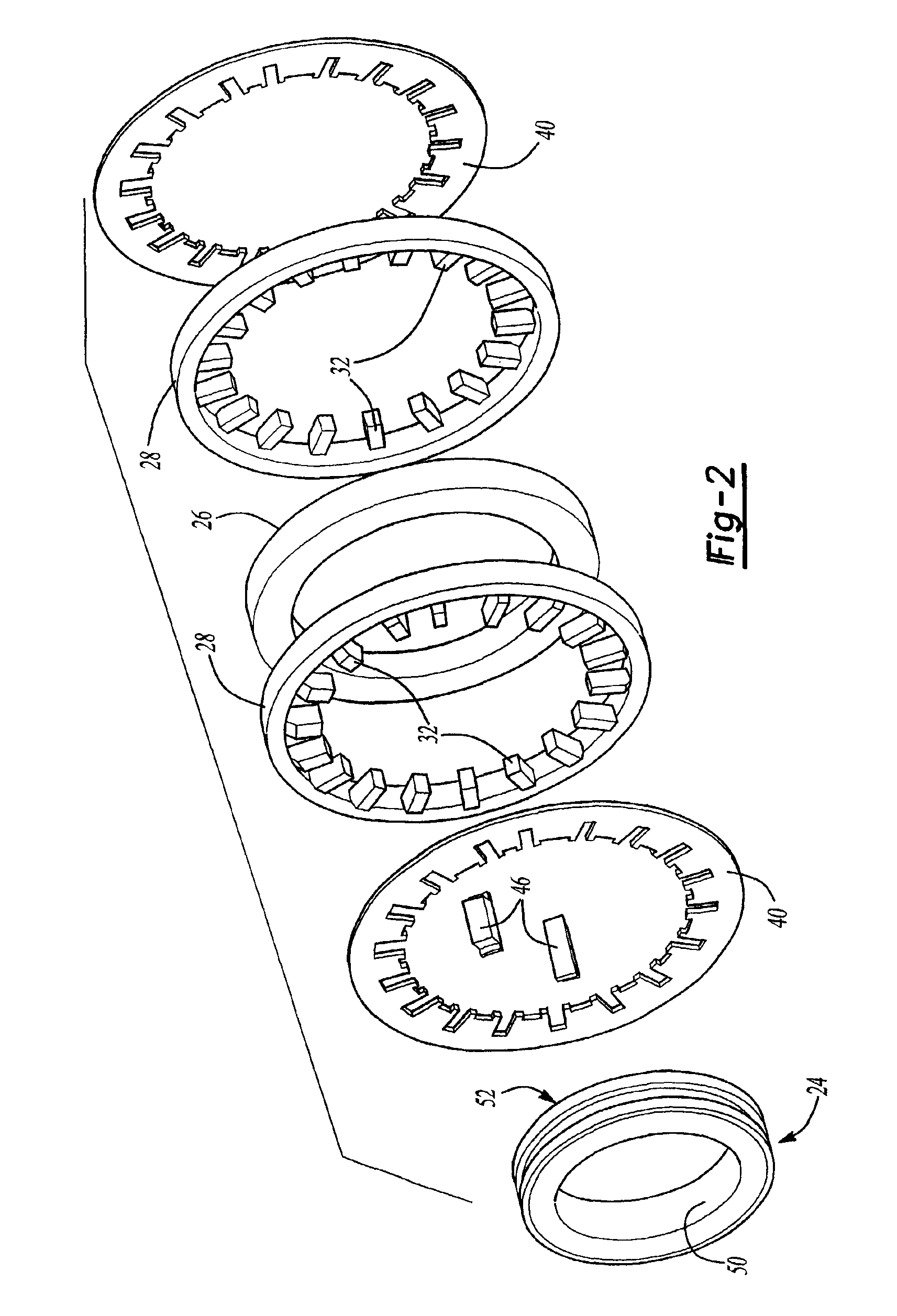Fabricated components of transverse flux electric motors
a technology of transverse flux and components, applied in the direction of dynamo-electric components, synchronous machines with stationary armatures and rotating magnets, magnetic circuit shapes/forms/construction, etc., can solve the problems of significant challenge, difficult to make with desired performance characteristics, and relatively expensive transverse flux machines. achieve the effect of improving motor performance and flux transfer
- Summary
- Abstract
- Description
- Claims
- Application Information
AI Technical Summary
Benefits of technology
Problems solved by technology
Method used
Image
Examples
Embodiment Construction
[0019]FIGS. 1-7 show a first example implementation of this invention. An electric motor assembly 20 includes a stator 22 and a rotor 24. The stator 22 and rotor 24 are supported for relative rotary motion to generate electrical power in a manner that is understood by those skilled in the art.
[0020]As best seen in FIGS. 2 and 3, the stator 22 preferably includes a coil 26 supported between a pair of stator core portions 28. Each core portion 28 preferably includes an inner coil supporting surface 30 and a plurality of radially extending projections 32. The stator poles are provided by the projections 32, which preferably are equally, circumferentially spaced about the stator core portions 28 facing inward toward a central axis of the stator. The coil 26 preferably is placed between two opposing stator core portions 28 in a nesting relationship as illustrated in FIG. 3.
[0021]In the illustrated example, although it is not required to achieve the results provided by this invention, the...
PUM
| Property | Measurement | Unit |
|---|---|---|
| magnetic | aaaaa | aaaaa |
| torque densities | aaaaa | aaaaa |
| conductive | aaaaa | aaaaa |
Abstract
Description
Claims
Application Information
 Login to View More
Login to View More - R&D
- Intellectual Property
- Life Sciences
- Materials
- Tech Scout
- Unparalleled Data Quality
- Higher Quality Content
- 60% Fewer Hallucinations
Browse by: Latest US Patents, China's latest patents, Technical Efficacy Thesaurus, Application Domain, Technology Topic, Popular Technical Reports.
© 2025 PatSnap. All rights reserved.Legal|Privacy policy|Modern Slavery Act Transparency Statement|Sitemap|About US| Contact US: help@patsnap.com



